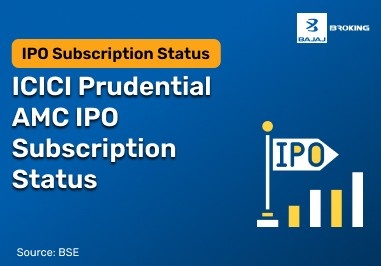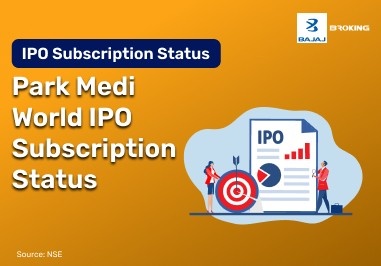The NPS Calculator for Government Employees is a useful tool to estimate the retirement corpus under the National Pension Scheme (NPS). Government employees can use this calculator by entering their monthly salary, contribution rate, age, and expected return rate. It helps in planning for retirement by showing how their money may grow over time. However, the calculator gives only estimates and does not provide guaranteed results.
What is the Government Employees NPS Calculator?
The NPS calculator is a digital tool designed to help government employees plan for retirement. It estimates the final corpus based on monthly contributions and expected growth. This tool considers your current age, retirement age (usually 60 years), and contribution rates—10% from the employee and 14% from the central government.
It also factors in average annual returns. The calculator shows how contributions can grow over time due to compounding. While it makes planning easier, it cannot predict actual returns. Instead, it gives a useful estimate of how much money you might have at retirement and how much pension you could receive.
Formula for NPS Calculator for Government Employees
The NPS calculator uses a compound interest formula to estimate the retirement corpus:
Formula:
Final Corpus=P×(1+r)n−1r×(1+r)
Where:
Key Components:
Employee Contribution: Usually 10% of basic pay plus DA
Employer Contribution: 14% (central government)
Annual Return: Typically between 8% and 10%
Annuity at Retirement: 40% of the corpus is used to buy an annuity
Withdrawal: 60% can be withdrawn as a lump sum
This formula gives an estimate of the retirement corpus and expected pension.
How to Use the NPS Calculator for Government Employees?
Follow these steps to use the NPS calculator:
Step 1:
Enter your current age, which must be between 18 and 60 years. This decides how many years you will contribute to NPS.
Step 2:
Input your retirement age, usually 60. The tool uses this to calculate how many years you will continue contributing.
Step 3:
Add your basic salary and DA. This forms the base for calculating your monthly contribution.
Step 4:
Set the contribution percentages. Many central government employees contribute 10%, and the government adds 14%.
Step 5:
Enter your expected return rate, for example, 9%, to estimate how your money might grow.
Step 6:
Mention your expected annuity rate at retirement, usually around 6%. This helps calculate your monthly pension.
Method for Calculating Investment Amount
To calculate the monthly investment:
Multiply your basic salary + DA by the employee’s contribution rate. Do the same for the employer's contribution.
Example:
If your salary is ₹40,000:
10% employee contribution = ₹4,000
14% employer contribution = ₹5,600
Total contribution = ₹9,600 per month
This total amount is used to estimate how your retirement savings will grow over the years.
Method for Estimating Retirement Target Amount
To estimate the final corpus:
The calculator applies the compound interest formula to the monthly contributions over your working years. 40% of the total corpus is mandated to be utilised to purchase an annuity, which provides you with a monthly pension, while 60% of the corpus could be taken out as a lump sum upon retirement.
This split offers flexibility and regular income after retirement.
NPS for Central Government Employees
Mandatory Since 2004
Since January 1, 2004, all new central government employees (except armed forces) have been covered under the NPS.
Tier I and Tier II Accounts
Tax Benefits
Section 80CCD(1): Employee contribution up to ₹1.5 lakh
Section 80CCD(1B): Additional deduction of ₹50,000
Section 80CCD(2): Employer’s contribution is also tax-free
Retirement Rules
60% of the corpus could be withdrawn without any tax.
40% is mandated to be used to buy an annuity
The plan is regulated by PFRDA, ensuring low costs and transparency
NPS for State Government Employees
Many state governments in India have adopted the NPS for their staff. While similar to the central government model, there may be small variations.
Overview
Applies to state government employees who joined on or after January 1, 2004
Replaces the old defined benefit pension model
Both the employee and the employer contribute 10% of Basic + DA
Key Features
Tier I account: Mandatory and locked till retirement
Tier II account: Optional with free withdrawals
At retirement, 60% can be taken as a lump sum, and 40% must be annuitized
Investments are spread across equity, corporate bonds, and government securities
Regulated by PFRDA for safety and transparency
Employees get tax benefits under Sections 80CCD(1), 1(B), and 2
Benefits of NPS Calculator for Government Employees
Accurate Pension Estimate
The calculator shows a realistic picture of the future corpus and pension, helping employees make better financial decisions.
Easy Planning
Adjust inputs like contribution percentage or expected return to see how your savings might change. This helps in goal setting.
Lump Sum and Pension Split
You can see clearly how much will be available as a lump sum and how much will convert to a monthly pension.
Compare Scenarios
Test different investment returns or contribution levels instantly. This makes it easier to plan your retirement wisely.
Saves Time
Instead of manual calculations, get quick and accurate results with just a few entries. Anyone can use the calculator, even without technical knowledge.
Requirements to Open an NPS Account
To use the NPS Calculator or open an NPS account, government employees need the following:
Indian citizenship
Age between 18 and 70 years
PAN or Aadhaar for KYC
Employment and department details
Nominee information
Mobile number and email ID for verification
Access to the CRA portal for online account management
Payroll setup for monthly contributions
The steps may vary slightly for central and state employees, but the process is mostly digital and simple.
Conclusion
The NPS Calculator for Government Employees helps estimate your retirement fund and pension based on monthly contributions and interest projections. By entering your age, salary, contribution rate, and expected returns, you get a clear picture of your financial future.
While the tool offers helpful insights, remember it gives only estimates, not guaranteed results. Factors like market performance and annuity rates can change outcomes. So, regularly review your inputs and update them as your salary or plans change. This will help you stay prepared for retirement with more accurate projections.














